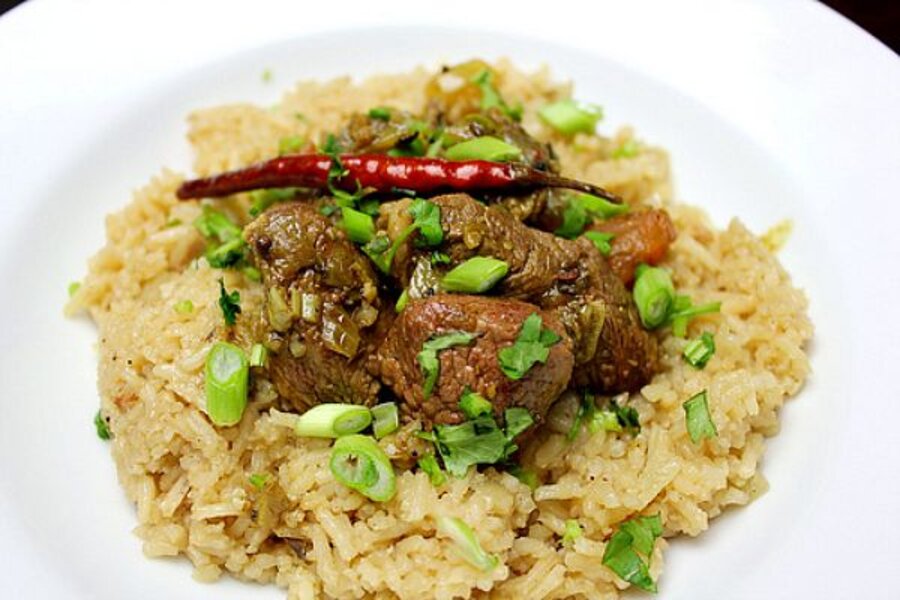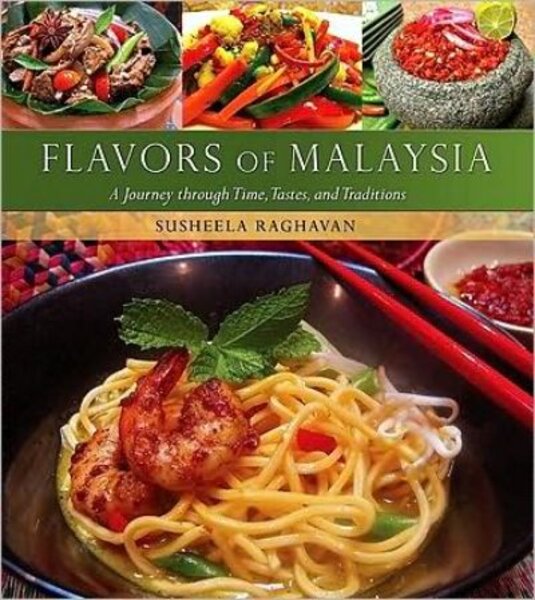Cookbook review: 'The Flavors of Malaysia'
Loading...
Though a resident of Singapore, then a part of Malaysia, during the early 1950s, I doubt very much if my father ever had much of an opportunity to experience its astonishing variety of cuisines. Confined mostly to the Changi district (now better known for its international airport) and the company of other expatriate British military families, his diet hardly differed from that of his older brother, Roger, who stayed in England at boarding school throughout the family’s four year sojourn in the east.
A child of the gastronomic wasteland of post-Word War II rationing, when food was extracted from a can and then boiled to the point of annihilation, my dad is still a picky eater, ever-ready to pull a face if served something strongly flavored. In the broader context of his early years, these culinary proclivities aren’t so surprising. Well into the 1990s (by which time rationing had been over for more than 40 years), I remember visiting my paternal grandparents and noticing that their oven was spotless in spite of being nearly 20 years old, having been used exclusively as extra storage space for canned goods.
Widely read, well-traveled and knowledgeable about many things, gastronomy is one of the few areas of which my dad is entirely ignorant. Exposure, at such a tender age, to such perfumed and harmonious dishes as Singapore and Malaysia offer in abundance could have had a profoundly transformative influence on his tastebuds. Instead, the insipid and farty flavors of boiled beef and cabbage became the signature flavors of his youth.
All of which, to me at least, is a great shame since the laksas, curries, stir-fries, biryanis and sambals – culled from an ethnic and religious make-up as varied as any nation – that he could have tasted, are the signatures of a country that for milennia has been the regional cross-roads and melting-pot.
Susheela Raghavan’s family, on the other hand, embraced this tantalizing concoction, and in her new book, "The Flavors of Malaysia: A Journey Through Time, Tastes and Traditions," she draws together a collection of recipes from across the full range her country’s diversity into a harmonious whole that is as interesting and educational to read as it is jam-packed with deliciousness.
From opening chapters that place her and her family at the heart of Malaysia’s ethnic variety, to much-needed ethnographic and geographic explanations of how it all came to be, to charming anecdotes of recollections and family stories, "The Flavors of Malaysia" really is a cookbook you can read and learn from. In fact, as you read, what you really notice is what a tour de force Raghavan has performed in creating something coherent and comprehensive out of such marvelous diversity.
The Malay fragrant rice that accompanies the lamb peratil (a sort of dry curry) perfectly encapsulates the depth and complexity of Malaysian cooking (see photo). Using the predominantly Indian spice blend almost as a tea to perfume the cooking liquid, the addition of garlic, ginger, sugar and soy sauce to the rice makes for as cross-cultural a dish as any I can think of. The lamb, on the other hand, is representative of the profound influence south Indian cooking has on Malaysian cuisine, demonstrating that although mixing and borrowing takes place, the country’s resident non-Malay groups have maintained their own traditions too.
If the recipes we made sound exotic, then they should. The food of Malaysia is perhaps the world’s most pungent, combining the abundant spices of Indian cuisine, the fragrance of Thai and Vietnamese herbs and rhizomes, the simplicity of local Malay techniques, the incorporation of Portuguese ingredients and Dutch or British implements, and rounding it out with the balance of sweet, salty, sour, and spicy native to Chinese cooking. That this has become a fascinating and unique brew and not a toxic hodgepodge speaks to the generally harmonious philosophy of a country whose moderate Malay Muslim majority lives cheek by jowl with Indian Muslims, Indian Hindus, Eurasian Christians, Chinese and Thai Buddhists and native animist groups.
It would be easy to be intimidated by this exoticism, and certainly, it’s unlikely the average pantry will contain even half the required items – some spice mixes reading like an apothecary’s top shelf – but the spectacular results make it worth persevering. To be fair, though the recipes are remarkably easy to follow, this isn’t really the kind of tome the owner of an average pantry would seek out. One needs to be prepared for an experience quite unlike anything one may have tasted before, and while I would love to suggest this book will fly off the shelves, my feeling is that only the adventurous will seek it out. The fact that not all dishes are pictured convinces me of this (150 recipes, 16 pages of color photographs), as a leap of faith is necessary in making something you have no clue what it looks like. If there were a large Malaysian community in America where one could get accustomed to this kind of food things might be different. For those of us looking for something tantalizingly new for our taste buds though, I can heartily recommend this book. Not only will your house be filled with fascinating aromas, and your stomach filled with astonishing dishes, but your intellect will be stimulated by a country and people of marvelous history, culture. and depth.
Jonny Seponara-Sills blogs with his wife, Amy, at We Are Never Full.
To see the original post, click here.
--------------------------------------------------------------
The Christian Science Monitor has assembled a diverse group of food bloggers. Our guest bloggers are not employed or directed by The Monitor and the views expressed are the bloggers' own and they are responsible for the content of their blogs and their recipes. All readers are free to make ingredient substitutions to satisfy their dietary preferences, including not using wine (or substituting cooking wine) when a recipe calls for it. To contact us about a blogger, click here.






